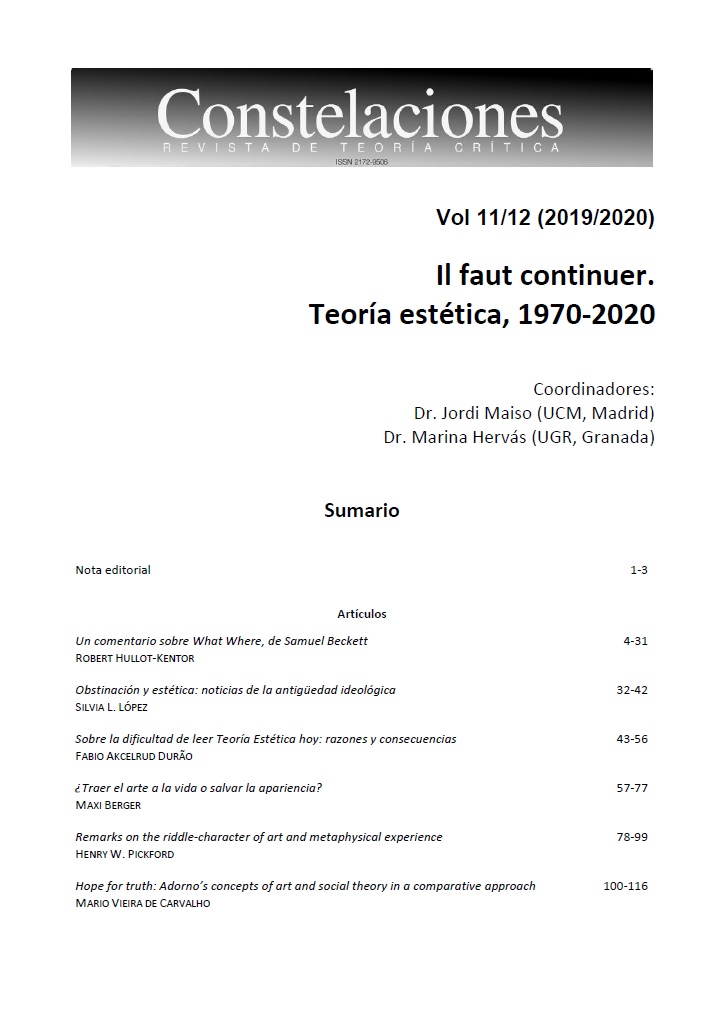About the irreconciliability of Traditional aesthetics and contemporary art: Some current tensions from Adorno's Aesthetic Theory
Keywords:
Aesthetics, Adorno, Aesthetic Theory, Avantgarde, Osborne, RancièreAbstract
The frictions between 20th century art and aesthetics as a discipline, addressed by Theodor W. Adorno between 1962 and 1969 throughout his work Aesthetic Theory, constitute the basis of both his own project and a very important part of the posterior theoretic-artistic debates, whose validity remains alive even today. The purpose of this paper is to address some of them (the tensions between modern categories and contemporary practices; the analyzes which are focused merely on the object or on the aesthetic experience; the reflexivity and materiality of the work in contrast with that of the discourses, etc.) in order to connect them with two contemporary authors who, explicitly or not, have updated the analyzes of the Frankfurtian author, appreciating his approach: Peter Osborne and his proposal constitutes a self-critical discourse against the deficiencies of Aesthetics, and Jacques Rancière and his interpretation of the aesthetic regime of art as a mode of distribution of the sensible. Our aim, therefore, is to show how contemporary Aesthetics and Theory of art continue to learn from the Adornian project, but also that they are still useful tools with which one can approach the most recent artistic practice.
Downloads
Downloads
Published
How to Cite
Issue
Section
License
Authors who have publications with this journal accept the following terms:
1. Authors will retain their copyright and grant the journal the right of first publication of their work, which will be simultaneously subject to the License of recognition of Creative Commons CC BY-NC-SA 4.0 that allows third parties to share, redistribute and adapt the work provided it is for non-commercial purposes and its author and first publication in this journal is indicated.
2. Authors may adopt other non-exclusive distribution license agreements for the version of the published work (e.g., depositing it in an institutional electronic archive or publishing it in a monographic volume) provided that the initial publication in this journal is indicated.
3. Authors are permitted and encouraged to disseminate their work via the Internet (e.g., in institutional telematic archives or on their website) before and during the submission process, which can produce interesting exchanges and increase citations of the published work. (See The Effect of Open Access).
Data confidentiality
1. Constelaciones. Revista de Teoría Crítica guarantees that the data you send us will only be used to meet the requests made in this message.
2. Your data will not be passed on to third parties.
3. You may request that your data be removed from our records at any time.





